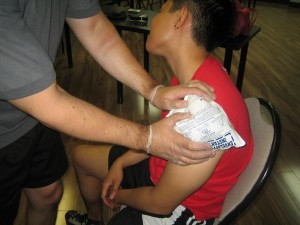Overview
When you have been stung by a bee, first things first, get away from the bee! You can treat the actual sting, but you do not want to end up treating numerous stings. When a bee is in danger, often the case when they sting you, they release a scent that attracts other bees, which means that you could be facing several other bees.
Why Treat a Bee Sting

Bee stings are painful and they can be dealing for those who are allergic to the venom that bees release. The best way to ensure that you are not going to have an allergic reaction is to get the stinger out of your skin and treat the sting as soon as possible. There are those who are highly allergic to bee stings and suffer from anaphylaxis. If you were to be stung by a hornet or wasps, you will find that you can treat the sting in the same manner, as the venom of all of these insects is about the same.
You need to remove the stingers immediately! Just simply pluck these out however you can, including if the only option you have is with your fingers. The longer that these stingers remain in the body, the more likely you are to see an allergic reaction.
Scraping: It is a Myth
There has always been the thought that if you are stung by a bee, you need to scrap the stinger out of the skin. This type of thinking stated that if you were to scrap the stinger out of the skin, you are less likely to release more venom into the blood stream. However, this is one of the biggest myths that is out there!
This is a proven myth, as other bugs like wasps or hornets, do not leave their stinger behind, but all of these insects can cause allergic reaction. The stinger is not what causes the allergic reaction.
When you are stung by a bee you will more than likely see redness or swelling in the area that you have been stung. And this is common, including the pain that you may feel. To help alleviate these symptoms, consider:
- Use an ice pack in order to help with the swelling, but be sure that you are not leaving this on for too long
- Reduce the swelling and itching with an antihistamine
- If you have pain, utilize ibuprofen or acetaminophen
In most cases, you will find that the pain that is associated with bee stings will leave pretty quickly. However, you may see swelling or itching for a few days.
